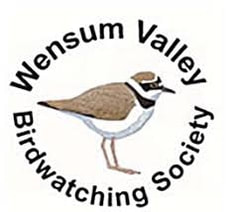|
Speaker: Conor Mark Jameson Reporter: Sue Gale Conor used to subtitle this talk ‘The Lost Raptor’ because Goshawks became extinct as a breeding raptor in the UK in 1879. As often seems to have been the case, the last pair, that nested in Birnham Wood, was shot and stuffed. Fortunately, they were re-established in the ‘60s and ‘70s and are currently increasing. They are, in fact, widespread across the Northern hemisphere, and have become the national bird of N Korea and the state bird in the Punjab and they are used in falconry in many countries, including our own. The difficult thing to report about this talk is the quality and quantity of images of Goshawks that Conor showed us. They illustrated the plumage of the birds, but mainly they demonstrated the magnificence of these birds of prey, often in very dramatic fashion.
The Goshawk nests mainly in coniferous forests in the UK, although, as we were to hear, that is not always the case elsewhere. The smaller male builds the nest and then does the hunting, leaving the female to guard the nest and protect and later feed the young. The food he brings back is 50% Grey Squirrel and then 20% Wood Pigeon. They don’t take much game, a fact that perhaps needs more publicity. They are found mostly in Scotland and Wales, but also in the Kielder Forest of Northumberland, but it’s a large forest and Conor has never seen one there. In Europe the Goshawk can be an urban bird, which seems very strange to us. In Berlin Conor was taken to cemeteries, industrial sites and a small park where he finally had excellent views. The birds have become quite habituated to people and went about their usual tasks in full view of the population. They are very widespread in the Netherlands and have been shown to cross the North Sea, so perhaps we can benefit from that? Conor’s own search for the Goshawk was the topic after the tea break. He particularly wanted to see the last pair of Goshawks before extinction in 1879. They can be found in the museum at Perth, in Scotland, although it took some persistence for Conor to gain access to them. For living birds he travelled, visiting the Trossacs, Kielder, the Dee Valley, Catalonia and of course Berlin. Goshawks are often seen in open country now, perhaps even more than have been reported. People often discount sightings, perhaps thinking they have seen a large Sparrowhawk, because they don’t expect to see them away from forests. As Conor said, we tend to see what we expect to see.... A search for Goshawks in history found their fossilised bones in Orkney, reports in the Domesday Book, an appearance in the Bayeux Tapestry and King John and Henry VIII using them in falconry. More recently they were shot and collected before they disappeared entirely from the UK. TH White is a hero of Conor’s, and his book The Goshawk is recommended. He seems to have had a similar quest to Conor’s own, seeking the Goshawk abroad and dying in Athens, where he is buried. At the present time the numbers of Goshawks here are increasing, in spite of continued persecution, and current counts are approaching 1000 pairs. The BTO has tagged Goshawks locally, with similar studies in the Forest of Dean and the New Forest, which is where the data on Goshawks in open country originated. An interesting halo effect has been noted around Goshawk nests. Small birds tend to nest close to the large predator because they get less trouble from others! So, a fascinating talk ended on a very positive note, as Goshawk numbers continue to increase. Many thanks to Conor and long may he continue to observe these beautiful birds.
0 Comments
Leave a Reply. |
Please feel free to read through our reports from our monthly indoor / online meetings. Archives
May 2024
Categories |

 RSS Feed
RSS Feed
